

Historic Printmaking Techniques Every Artist Should Know
Summary
In this article, you will discover the rich history of printmaking techniques, from ancient woodcuts and etchings to modern digital prints. Explore methods like relief printing, intaglio, lithography, and screen printing, and learn about their impact on art through the ages. This comprehensive guide highlights key characteristics, notable artists, and the enduring relevance of these techniques in contemporary art.
Reflection Questions
- How have traditional printmaking techniques influenced modern digital printmaking?
- What are the unique advantages and challenges of working with different printmaking methods?
- How can contemporary artists integrate historic printmaking techniques into their own work to create innovative pieces?
Journal Prompt
Reflect on a printmaking technique that resonates with you the most. Describe why it stands out and how you might incorporate it into your artistic practice. Consider the historical context and the potential for modern adaptation in your creative process.
Printmaking has played an important role in the evolution of art—much further back in history than many of us might expect. From the detailed woodcuts of Renaissance Europe to the collagraphs of today, printmaking techniques have enabled artists to produce multiple copies of their work, making art more accessible and widespread. Despite the advent of modern digital technologies, traditional printmaking methods remain deeply relevant, offering unique textures, tactile qualities, and expressive possibilities that continue to inspire contemporary artists. We hope this article will educate and inspire artists exploring historic techniques and highlighting their enduring impact on modern artistic practices. By understanding and experimenting with these time-honored methods, today’s artists can create innovative works that honor the past while pushing the boundaries of contemporary art.
Relief Printing


Relief printing is one of the oldest and most fundamental printmaking techniques, characterized by its distinctive process of carving away material from a printing surface so that the remaining raised areas form the image to be printed. In a relief print, the artist cuts into a block or plate, typically made of wood, linoleum, or other suitable materials, to create a design across the entire surface of the transferring medium.
The raised (uncarved) areas represent the parts of the design that will receive ink, while the recessed (carved) areas remain ink-free and produce the white or negative spaces in the final print. The inked block is then pressed onto paper or another substrate, transferring the inked design and creating a print. This process can be repeated multiple times to produce a series of prints, known as an edition.
Relief printing has a rich historical significance and has been employed across various cultures and time periods. Its origins can be traced back to ancient civilizations, such as the Egyptians and Mesopotamians, who used cylinder seals to create impressions on clay tablets.
Woodcut
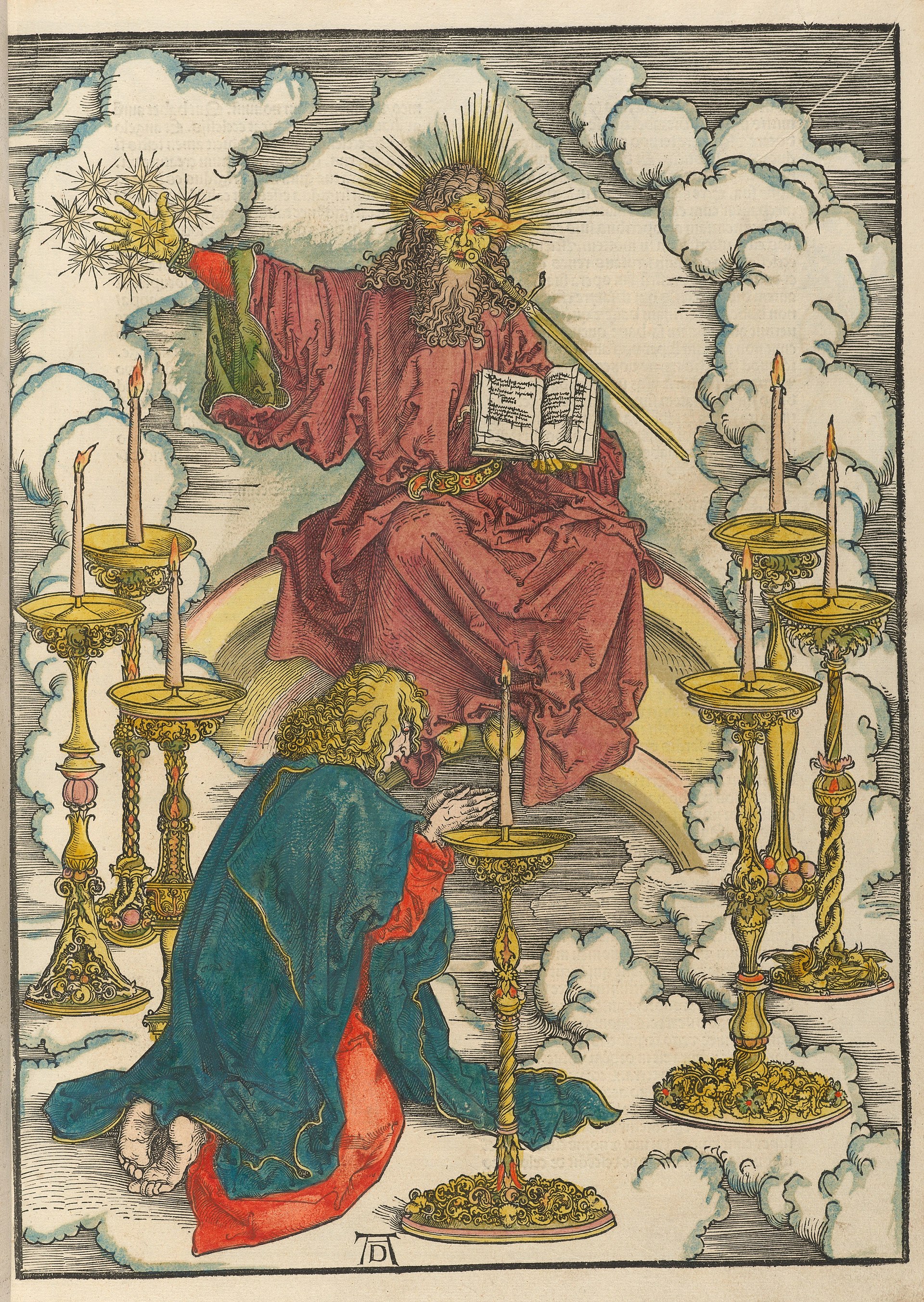

Illustration from Apocalipsis, Nuremburg: 1498, by Albrecht Dürer (1471-1528). Typ Inc 2121A, Houghton Library, Harvard University
In Asia, wood block printmaking processes emerged in China during the Han Dynasty (around the 1st century AD). This method spread to Japan, where it became integral to the ukiyo-e art movement, producing famous prints that depicted landscapes, theater actors, and everyday life.
In Europe, relief printing gained prominence during the Middle Ages, primarily for religious imagery and texts, and saw significant artistic development during the Renaissance. Artists like Albrecht Dürer elevated woodcut to a fine art, creating intricate and expressive works that showcased the technique’s potential for detail and storytelling. Today, relief printing remains a popular medium for artists, valued for its hands-on, tactile nature and its ability to produce bold, impactful images.
Key Characteristics of Woodblock Printing
The woodcut technique involves carving an image into the surface of a wooden block, with the raised areas representing the parts of the design that will be inked and printed. This method is known for producing bold lines and high contrast, as the carved-away sections remain uninked and create negative space. The unique visual qualities of woodcut prints, with their strong lines and striking contrasts, allows for dramatic and detailed imagery, making it a favored medium for both expressive art and clear, illustrative purposes.
Prominent Woodcut Artists
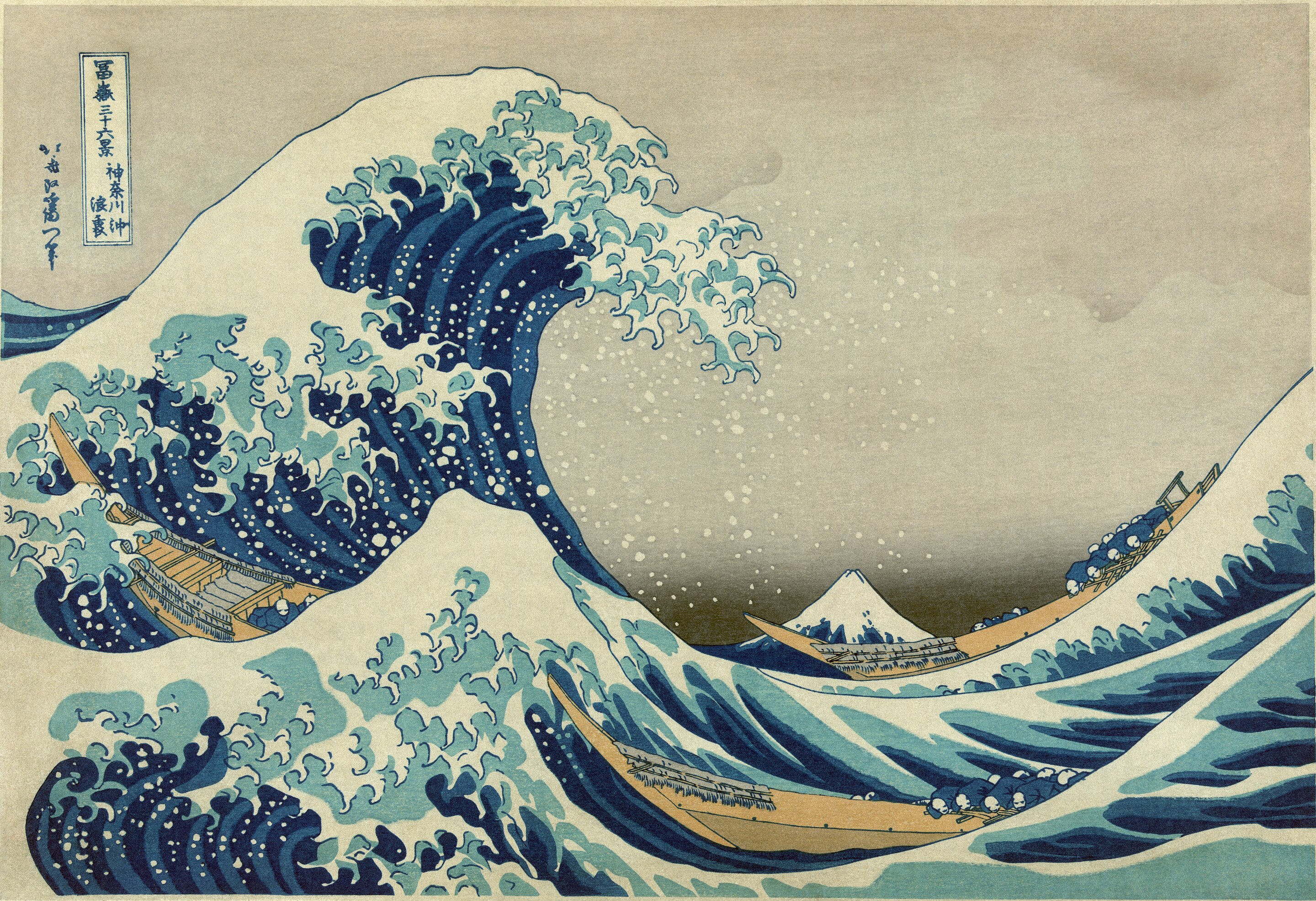

The Great Wave off Kanagawa, Hokusai
Albrecht Dürer, a German Renaissance artist, is renowned for his highly detailed and complex woodcuts, such as “The Four Horsemen of the Apocalypse,” which showcase the potential of woodcut for creating intricate and dynamic scenes. Katsushika Hokusai, a Japanese artist, is celebrated for his ukiyo-e prints, particularly the “Thirty-Six Views of Mount Fuji,” including the iconic “The Great Wave off Kanagawa.” Hokusai’s work demonstrates the versatility and artistic depth achievable with woodcut.
In contemporary practice, Ideherma woodblock prints are some of the most celebrated. These were created by artist Idaherma Williams, who passed away in 2021. She explored the transformation of wood into prints with a focus on color and nature. Her works often feature floral themes and are meticulously hand-printed using a Japanese baren on special handmade papers. Williams, who held a Master of Fine Arts from the University of Pennsylvania, was known for her vibrant use of color and detailed craftsmanship. Her prints were produced in limited editions and reflected her deep appreciation for the medium and its possibilities
Linocut


Linocut is a relief printing technique that evolved from woodcut in the early 20th century. Unlike woodcut, which uses wood blocks, linocut utilizes linoleum sheets as the carving surface. This innovation made the technique more accessible, as linoleum is easier to carve than wood. The development of linocut was embraced by modern artists who were seeking new and more expressive ways to create prints without the physical limitations of harder materials.
Key Characteristics of Linocut Printing


The key characteristic of linocut is its use of a softer material, which allows for smoother and more fluid lines compared to woodcut. Linoleum is easier to carve, enabling artists to produce detailed and refined images with less effort and risk of material breakage. The ability to create smooth curves and fine lines gives linocut prints a distinctive, clean aesthetic. Additionally, the material’s consistency and ease of use make it ideal for experimenting with bold and innovative designs. Linocut printing is a form of relief printmaking that allows for multiple impressions.
Prominent Linocut Artists
Several prominent female artists have made significant contributions to the art of linocut, each bringing their unique perspective and style to this versatile medium. These artists not only mastered the printmaking technique but also expanded the expressive possibilities of the medium, leaving a lasting impact on the world of printmaking. Their works continue to inspire and influence contemporary artists, highlighting the rich legacy of female printmakers in the history of art. Below are a few notable figures from the past.
Sybil Andrews (1898-1992)
A British-Canadian artist, Sybil Andrews is renowned for her dynamic and stylized linocuts. She was associated with the Grosvenor School of Modern Art in London, where she studied and worked alongside other influential printmakers. Her works often depict scenes of modern life and labor, characterized by bold colors and energetic compositions. Andrews’ linocuts, such as “Speedway” and “Concert Hall,” are celebrated for their vibrant depiction of movement and modernity.
Ethel Spowers (1890-1947)


An Australian artist, Ethel Spowers was also part of the Grosvenor School of Modern Art. Her linocuts are known for their whimsical and lively style, often portraying scenes of children at play, urban landscapes, and everyday activities. Spowers’ work, like “Wet Afternoon” and “The Gust of Wind,” captures a sense of joy and movement, reflecting her keen observation of life and her ability to infuse her prints with a narrative quality.
Lill Tschudi (1911-2004)
A Swiss artist, Lill Tschudi studied at the Grosvenor School under the tutelage of Claude Flight, a pioneer in modern linocut techniques. Tschudi’s linocuts are distinguished by their strong geometric forms, vibrant colors, and rhythmic compositions. Her works often explore themes of modernity, technology, and transportation, as seen in prints like “Ski-Joering” and “Ice Hockey,” which showcase her ability to depict dynamic action and contemporary life.
Margaret Preston (1875-1963)
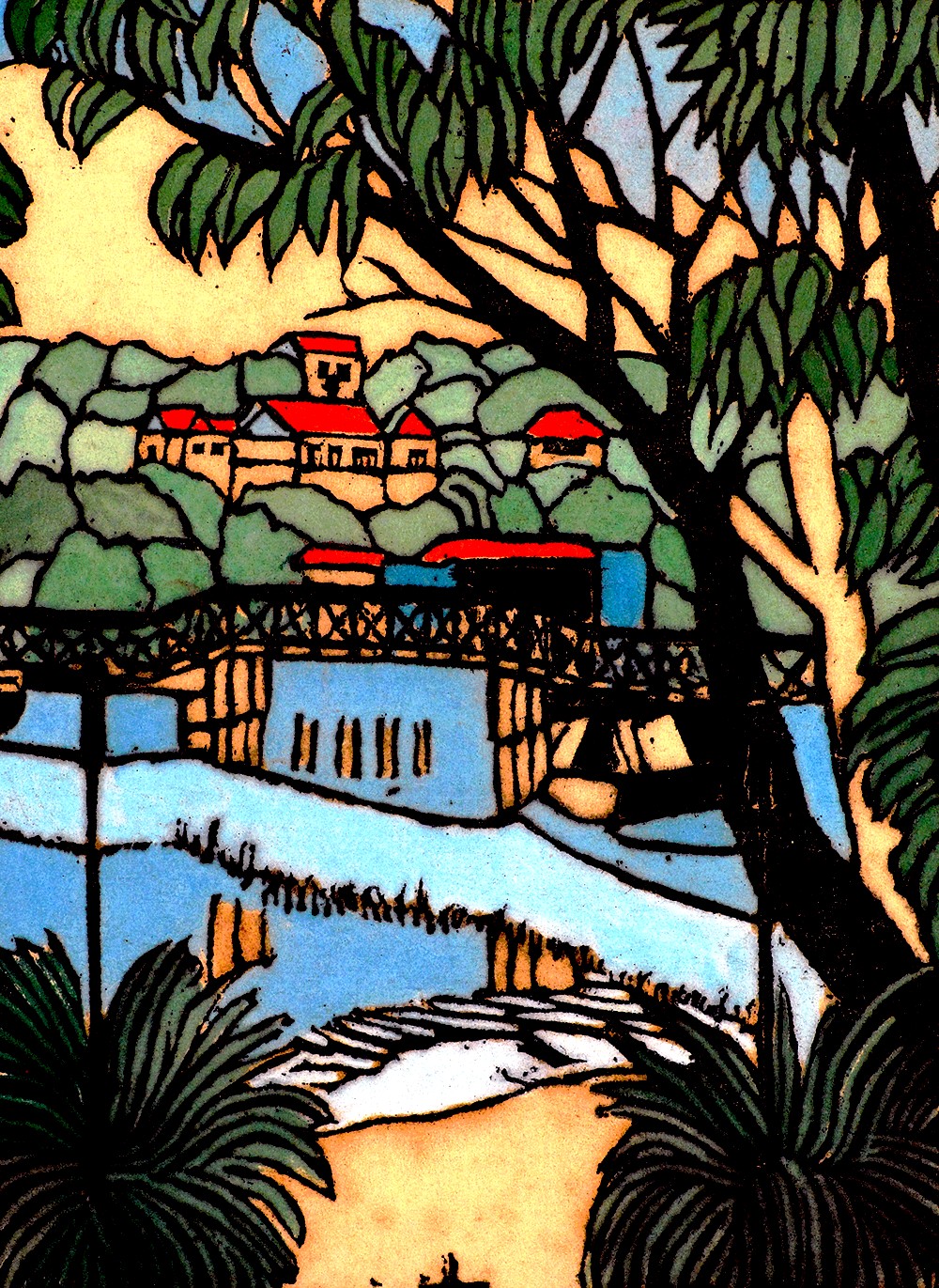

An influential Australian artist, Margaret Preston was known for her advocacy of modernist and indigenous Australian art. While she worked in various mediums, her linocuts are particularly celebrated for their bold and innovative use of color and pattern. Preston’s works often incorporate motifs from Australian flora and indigenous art, creating a distinctive fusion of modernist and local elements. Her linocuts, such as “Banksia” and “Waratah,” exemplify her unique artistic vision and her commitment to promoting Australian cultural identity.
Intaglio Techniques of Printmaking
Intaglio is a printmaking technique in which the image to be printed is incised or etched into the surface of a plate. The term “intaglio” comes from the Italian word meaning “to carve” or “to engrave.” Unlike relief printing, where the raised surface of the matrix carries the ink, intaglio printing involves printing ink being applied below the surface of the printing plate surface.
Engraving
The Judgment of Paris, Marcantonio Raimondi Italian, After Raphael (Raffaello Sanzio or Santi) Italian, ca. 1510–20
Engraving emerged as a significant printmaking technique during the Renaissance in Europe, around the 15th century. It evolved from earlier practices of incising designs into metal and other materials for decorative purposes. With the advent of printing, engraving became a primary method for reproducing detailed images and texts. The technique allowed for high precision and intricate detail, making it ideal for the dissemination of artistic and scientific works. Notable early centers of engraving included Germany and Italy, where artists like Albrecht Dürer and Marcantonio Raimondi mastered and expanded the medium’s possibilities.
Fuel your creative fire & be a part of a supportive community that values how you love to live.
subscribe to our newsletter
Engraving involves using a burin, a sharp tool, to carve fine lines into a metal plate, typically copper or zinc. The process allows for precise control over line width and depth, resulting in highly detailed images. The engraved lines hold ink, which is transferred to paper under high pressure, producing sharp, clear prints. This technique enables the creation of multiple copies from a single plate, maintaining the fidelity of the original design over many impressions. William Hogarth, an 18th-century British artist, used engraving to produce his famous series of satirical prints, such as “A Rake’s Progress,” which critiqued contemporary society and politics with both humor and precision.
Etching
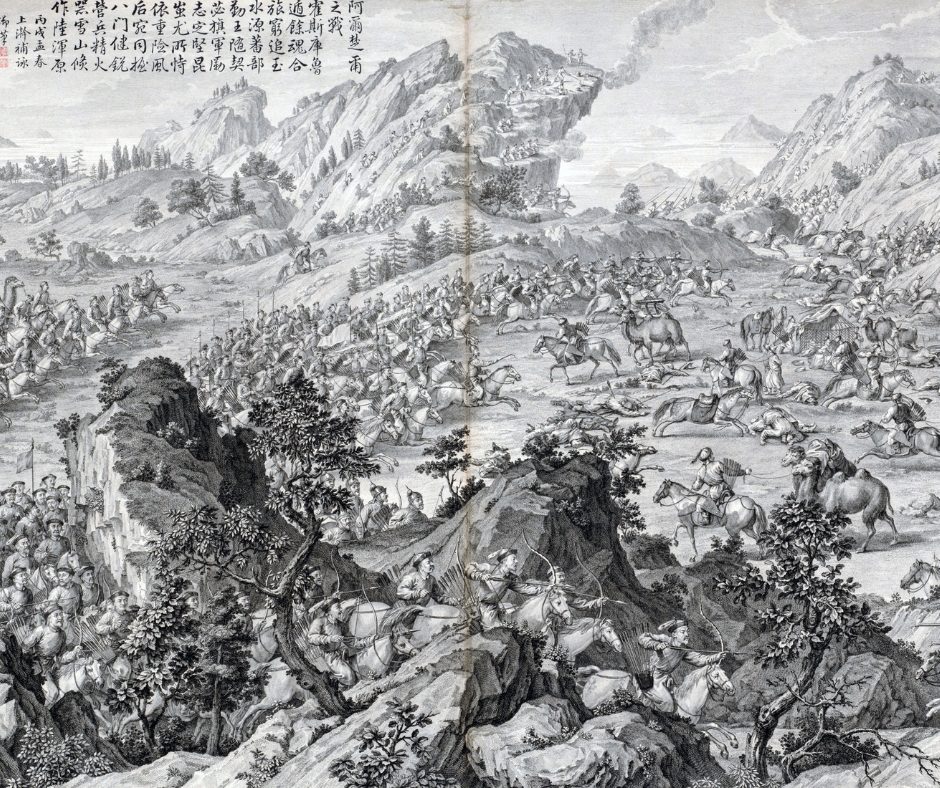

Etching developed as an evolution of engraving. Unlike engraving, it involved the use of acid to create designs on metal plates. This technique emerged in the early 16th century, providing artists with greater flexibility and freedom compared to the more labor-intensive engraving process. The use of acid allowed for more spontaneous and fluid lines, making it a preferred method for many artists seeking to capture more expressive and intricate details in their work.
In etching, an artist covers a metal plate with an acid-resistant ground and then draws a design through the ground with a needle, exposing the metal. The plate is then submerged in acid, which etches the exposed lines into the metal. This process allows for a range of line qualities, from delicate and fine to bold and deep, depending on the acid’s strength and the etching time. Etching provides greater artistic freedom and is more forgiving than engraving, enabling more fluid and expressive line work.
Prominent Etching Artists
Rembrandt van Rijn, a Dutch master, is celebrated for his etchings, which demonstrate a wide range of techniques and subjects, from portraits to landscapes. His ability to manipulate the medium to achieve deep contrasts and intricate details is evident in works like “The Hundred Guilder Print.” Francisco Goya, a Spanish artist, also excelled in etching, using it to create powerful and haunting series such as “Los Caprichos,” which critique societal norms and human folly.
Modern Applications of This Printing Process
Etching continues to be a popular technique for contemporary artists who appreciate its capacity for detail and expressive line work. It is widely used in art prints and experimental printmaking, allowing artists to explore various textures, depths, and effects. The method’s flexibility and versatility make it a dynamic tool for artistic expression in the modern printmaking landscape.
Mezzotint
Satan Presiding at the Infernal Council (1824). Mezzotint and engraving, size unknown. Victoria and Albert Museum, London
Mezzotint was developed in the 17th century by Ludwig von Siegen, a German soldier and amateur artist. The technique gained popularity for its ability to produce rich tones and subtle gradations of light and shadow, making it ideal for reproducing paintings and achieving a painterly effect in prints. It became particularly popular in Britain during the 18th century, where it was used extensively for portraiture and reproducing famous artworks.
Mezzotint is distinguished by its method of working from dark to light. The artist begins by roughening the entire surface of a metal plate with a tool called a rocker, creating a texture that would print as a solid black. The image is then created by smoothing areas of the plate to various degrees, resulting in a range of tones from deep black to bright white. This technique allows for rich, velvety blacks and smooth transitions of tone, giving mezzotints their distinctive, dramatic appearance.
Prominent Mezzotint Artists


Sunshine Falling on a Door, mezzotint in black, Vess Collection
John Martin, a British Romantic artist, used mezzotint to create his dramatic and apocalyptic landscapes, such as those in his “Illustrations to Milton’s ‘Paradise Lost.'” His ability to convey vast, atmospheric scenes with fine gradations of tone showcases the medium’s potential. Peter Ilsted, a Danish artist, is known for his intimate interior scenes, which use mezzotint to achieve a quiet, contemplative mood through delicate handling of light and shadow.
Planographic Printing or Lithography
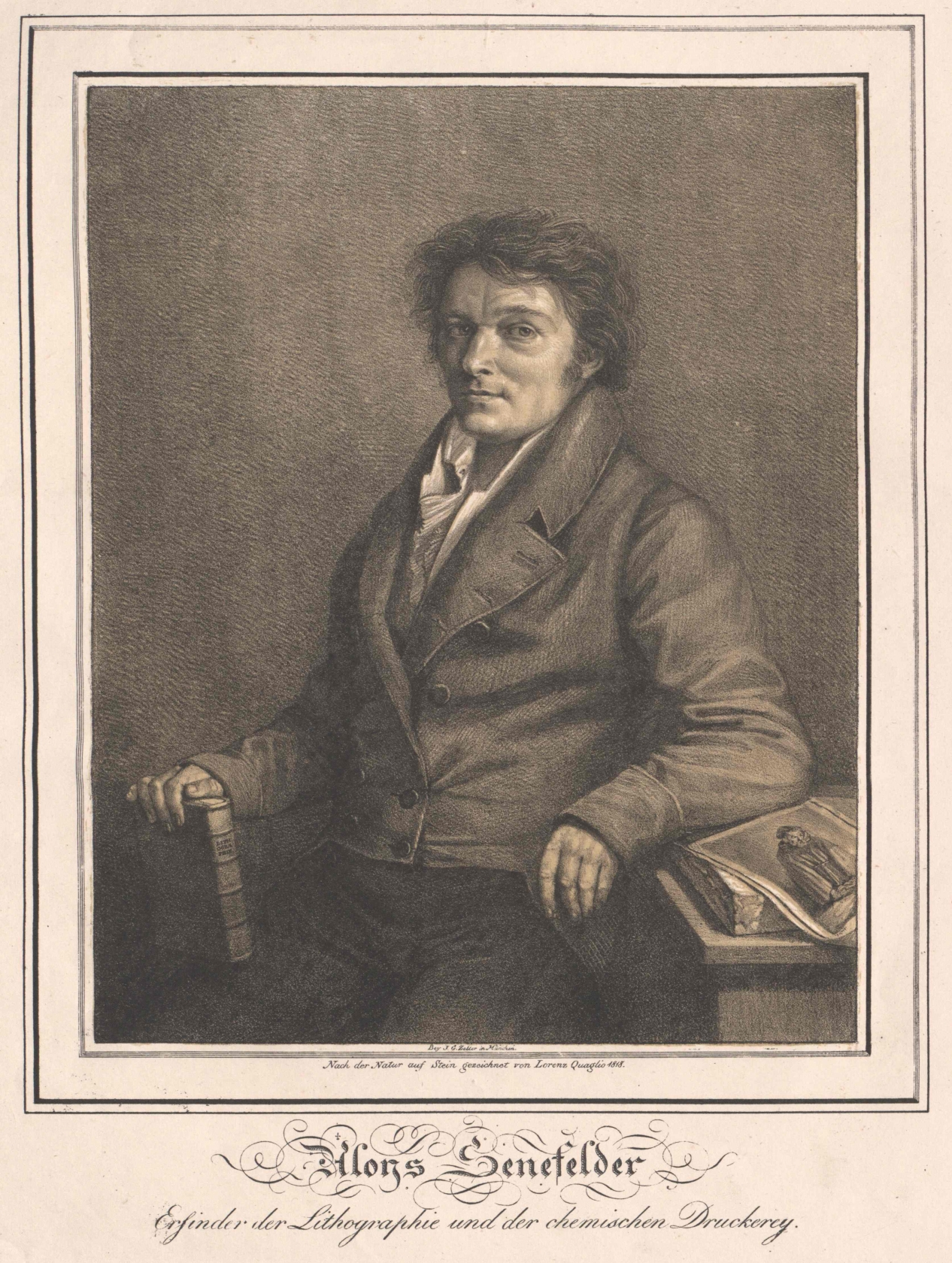

Portrait of Alois Senefelder, lithograph
Lithography was invented in the late 18th century by Alois Senefelder, a German playwright and actor, who sought an efficient method for printing his scripts. The invention of lithography revolutionized printmaking due to its simplicity and versatility. By the early 19th century, the technique had spread across Europe and was embraced by artists and commercial printers alike. Lithography allowed for mass production of texts and images, making it a pivotal development in the history of printing. During the late 19th and early 20th centuries, it became particularly popular among artists of the Art Nouveau and modernist movements.
Lithography is a planographic process, meaning it works on a flat surface. The technique is based on the principle that oil and water do not mix. An image is drawn on a flat stone or metal plate with a greasy substance. The plate is then treated with a chemical solution that ensures the greasy parts attract ink while the non-image areas repel it. This allows for subtle gradations of tone and a high level of detail. Artists can create a wide range of effects, from sharp lines to smooth tonal transitions, making lithography suitable for both detailed drawings and painterly works.
Prominent Lithographic Artists


Henri de Toulouse-Lautrec is renowned for his lithographic posters that capture the vibrant nightlife of Paris in the late 19th century. His works, such as the iconic “Moulin Rouge: La Goulue,” showcase the bold lines and dynamic compositions achievable with lithography. Pablo Picasso also extensively used lithography, exploring its potential for both black-and-white and color prints. His lithographs, like “Woman with a Yellow Necklace,” demonstrate his ability to manipulate the medium to create expressive and varied imagery.
Stencil Printing


Screen printing, also known as silkscreen printing, evolved from ancient stenciling methods that date back to early civilizations, including the Egyptians and Chinese, who used stencils to create patterns on fabric and pottery. The modern form of screen printing was developed in the early 20th century, with significant advancements occurring during the 1930s and 1940s.
This period saw the introduction of more durable materials like nylon and polyester screens, which replaced the traditional silk screens, and the development of photo-reactive chemicals that allowed for more precise and detailed designs. The technique gained widespread popularity for both commercial and artistic purposes in the mid-20th century.
Screen printing involves creating a stencil (or screen) and using it to apply layers of ink onto a substrate, such as paper, fabric, or other materials. The screen is made from a fine mesh stretched over a frame, with the stencil applied to block out areas where ink should not pass through.
Ink is then spread over the screen with a squeegee, passing through the open areas to create the design. This method allows for the application of vibrant, opaque colors and can be used on a wide variety of surfaces, making it highly versatile. Multiple screens can be used to layer different colors, creating complex and richly colored images.
Famous Silkscreen Artists
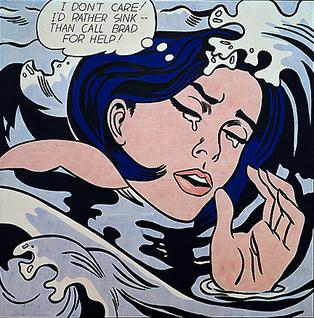

Attribution: By Roy Lichtenstein – http://www.lichtensteinfoundation.org/0117.htm, Fair use, https://en.wikipedia.org/w/index.php?curid=5673384
Andy Warhol is perhaps the most famous artist associated with screen printing, having popularized the technique in the art world during the 1960s. His iconic works, such as “Marilyn Diptych” and “Campbell’s Soup Cans,” utilized screen printing to explore themes of mass production and consumer culture. Warhol’s use of bold, repetitive imagery and vibrant colors demonstrated the potential of screen printing for fine art. Roy Lichtenstein also employed screen printing to produce his characteristic comic strip-inspired works, like “Whaam!” and “Drowning Girl,” which showcased his use of Ben-Day dots and bright, primary colors.
Today, screen printing is widely used in both commercial and artistic contexts. It is a popular method for producing T-shirt designs, posters, and various promotional materials due to its cost-effectiveness and ability to produce durable, high-quality prints. In the art world, screen printing continues to be a favored technique for creating limited edition prints and large-scale works. Its versatility allows artists to experiment with textures, layers, and a broad palette of colors. Additionally, the rise of DIY culture and the availability of screen printing kits have made it accessible to amateur artists and crafters, further broadening its appeal and application.
Collagraph


Attribution: Women’s Studio Workshop, CC BY 2.0 <https://creativecommons.org/licenses/by/2.0>, via Wikimedia Commons
Collagraphy, a relatively modern printmaking technique, emerged in the mid-20th century as artists sought new and innovative ways to express texture and depth in their prints. The technique was named and popularized by Glen Alps, an American artist and educator who significantly contributed to its development and teaching. Collagraphy represents a departure from traditional printmaking methods, emphasizing experimentation and the use of unconventional materials. It quickly gained popularity among artists for its versatility and the unique textural qualities it could produce, marking a significant evolution in the printmaking field.
Collagraphs are distinguished by their rich textural variety and the experimental approach used in their creation. Artists build a collagraph plate by collaging various materials—such as fabric, paper, string, sand, and found objects—onto a rigid surface like cardboard or wood. The assembled plate is then sealed with varnish to create a unified printing surface. This process allows for a wide range of textures and relief effects, making each collagraph plate unique. Ink is applied to the plate in either an intaglio or relief manner, or a combination of both, and then transferred to paper through a printing press. The resulting prints can have intricate surface details and varying tonal qualities, offering a distinctive tactile and visual experience.
Artists Associated with Collagraphy
Glen Alps is widely regarded as the pioneer of collagraphy. His innovative work and dedication to teaching the technique helped establish it as a respected printmaking method. Alps’ prints often explore abstract forms and textures, demonstrating the potential of collagraphy to produce complex and engaging imagery. His influence extended to many students and artists who embraced the medium and continued to expand its possibilities.
Collagraphy in Contemporary Art
Today, collagraphy is embraced by contemporary artists for its flexibility and the creative freedom it offers. It is used extensively in the creation of art prints and mixed media works. The technique allows artists to incorporate a variety of materials and textures into their prints, enabling them to push the boundaries of traditional printmaking.
Collagraphy is also popular in educational settings, where its hands-on, experimental nature makes it an excellent medium for exploring artistic processes and techniques. The unique combination of texture, relief, and the potential for mixed media integration continues to make collagraphy a dynamic and evolving form of artistic expression in the modern art world.
Digital Printmaking


Digital printmaking emerged in the late 20th century with the advent of computer technology and digital imaging. Initially used for commercial purposes, such as graphic design and advertising, digital printmaking quickly found a place in the fine arts. The development of high-quality digital printers and software tools allowed artists to explore new creative possibilities, blending traditional printmaking techniques with modern technology. This evolution marked a significant shift in the art world, opening up new avenues for artistic expression and production.
Digital printmaking involves creating images using computer software and then printing them using high-resolution digital printers. This process allows for precise control over color, texture, and composition, enabling artists to produce highly detailed and vibrant prints. Digital printmaking can replicate the appearance of traditional methods, such as lithography or etching, or create entirely new styles and effects that are unique to the digital medium. The flexibility of digital tools allows for endless experimentation, making it a versatile and dynamic art form.
Important Digital Artists
Several contemporary artists have embraced digital printmaking, using it to push the boundaries of traditional art forms. For instance, David Hockney, a renowned British artist, has extensively used digital tools to create digital prints, blending his traditional skills with new technology. Similarly, artists like Shepard Fairey and Banksy have utilized digital printmaking techniques to produce iconic works that blend street art, graphic design, and fine art.
Final Thoughts on Historic Printmaking Processes
The complex and varied history of printmaking—from the intricate engravings of the Renaissance to the vibrant screen prints of the 20th century, and the culturally significant African printmaking traditions—offers an invaluable foundation for contemporary artists. Each method, whether it be the textural variety of collagraphy or the bold contrasts of woodcut, presents unique opportunities for creative expression.
We encourage today’s artists to delve into these traditional methods, not only to appreciate their historical significance but also to experiment and innovate within these established frameworks. The fusion of these time-honored techniques with contemporary artistic practices can lead to the creation of new, compelling works that honor the past while boldly exploring the future. By embracing and reinterpreting these classic methods, artists can continue to expand the boundaries of printmaking, ensuring its relevance and vitality for generations to come.








